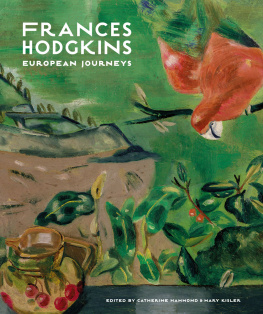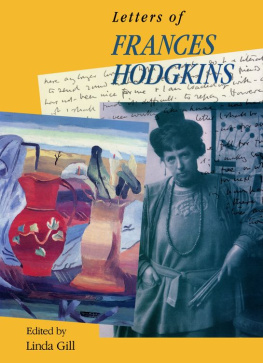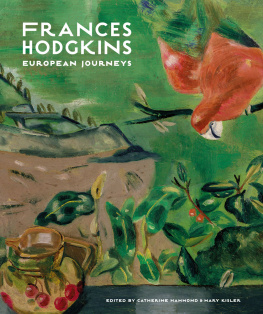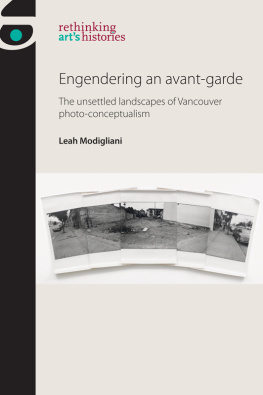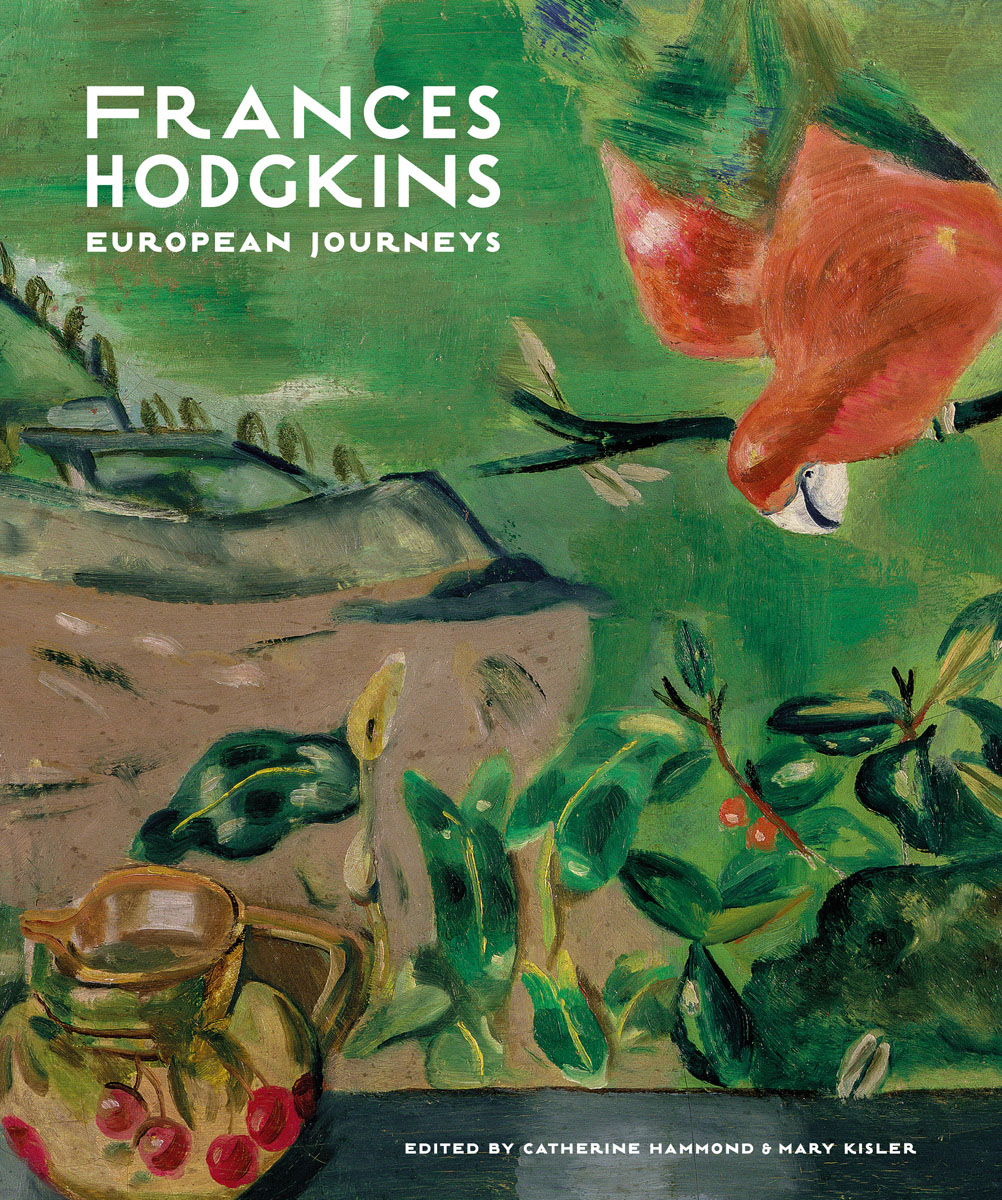


Foreword
Frances Hodgkins (18691947) remains one of Aotearoa New Zealands most independent and significant artists and she was the first to achieve international recognition, celebrated in her lifetime as one of Britains leading modernist painters. Enthusiastically reclaimed by New Zealand after her death, the artists work is yet to be reinserted within the European context in which her practice flourished. The exhibition Frances Hodgkins: European Journeys undertakes this important task with fresh research and insight. With infinite care and forensic fascination, the exhibitions curator Mary Kisler has examined the key significance of place and locale in Hodgkins work, and in doing so has illuminated her practice in unexpected ways. This, coupled with the launch of an online catalogue raisonn, makes this endeavour one of this countrys most important and extensive art-historical research projects in recent years. Underpinned by generous research funding from the Stout Trust, the Decorative and Fine Arts Society of New Zealand and NZUK Link, the exhibition will tour New Zealand and the United Kingdom and introduce new audiences to this exceptional painter and her remarkable legacy and influence.
This publication, which accompanies the touring exhibition, is generously supported by the Friends of the Auckland Art Gallery Incorporated and the Joy Marchant Bequest. It is one of the most ambitious yet published on Hodgkins and is the first exhibition catalogue to bring together new scholarship on the artist from both international and New Zealand writers. In addition to the illuminating chapters written by Mary Kisler, we are tremendously grateful to the books accompanying contributors: Frances Spalding, Elena Taylor and Antoni Ribas Tur on Hodgkins in England, France and Spain respectively; Alexa Johnston and Mary Kislers detailed chronology, Julia Waite on the St Ives period and Sarah Hillarys examination of Hodgkins modernist painting techniques and technical experimentations. Edited by Catherine Hammond and Mary Kisler, who jointly led the Hodgkins project at Auckland Art Gallery Toi o Tmaki, we were thrilled to work with Auckland University Press on this publication, not least because of their long and enduring publishing legacy on Hodgkins, including many of the key texts by her biographer Eric McCormick and Linda Gills consummate Letters of Frances Hodgkins.
Gathering together and researching the works of Frances Hodgkins vigorous six-decade long artistic career has been an immense task. It has required enormous dedication by gallery staff and a team of volunteers including senior curator Mary Kisler, librarians and archivists Catherine Hammond, Caroline McBride and Tamsyn Bayliss, photographers Jennifer French and John McIver, volunteer Chloe Steer alongside registrars Naomi Boult and Rachel Walmsley. This work has been supported by the guidance of the projects steering group comprised of Hodgkins experts Iain Buchanan, Roger Collins, Linda Gill, John Gow, Alexa Johnston and Linda Tyler. Their willingness to generously share their knowledge of and passion for the work of Frances Hodgkins has been invaluable.
We also extend our gratitude to the many lenders to this exhibition from both public and private collections in New Zealand, Australia, Canada and the United Kingdom, and to our New Zealand touring partners Christchurch Art Gallery Te Puna o Waiwhet, Dunedin Public Art Gallery and the Adam Art Gallery, Wellington. In particular the support of Tate in London and the Alexander Turnbull Library in Wellington has been vital: by providing access to their extensive archival holdings on Frances Hodgkins, as well as collaborating on the digitisation of significant material, our ability to tell the Frances Hodgkins story for a new generation has been immensely enriched.
Rhana Devenport, ONZM
Director, Auckland Art Gallery Toi o Tmaki, 20132018
CHAPTER ONE
Introduction: Locating Frances Hodgkins
Catherine Hammond and Mary Kisler
She was a highly intelligent woman whom I thought was an extremely good painter and that is how I regarded her and is the reason why I loved her. She was part of us with no parish, country, climate or anything else attached to her. She was just herself and she was such a sensitive person that she was very good at adopting the colour of the climate she was in like a fish on the bottom of the sea. JOHN PIPER
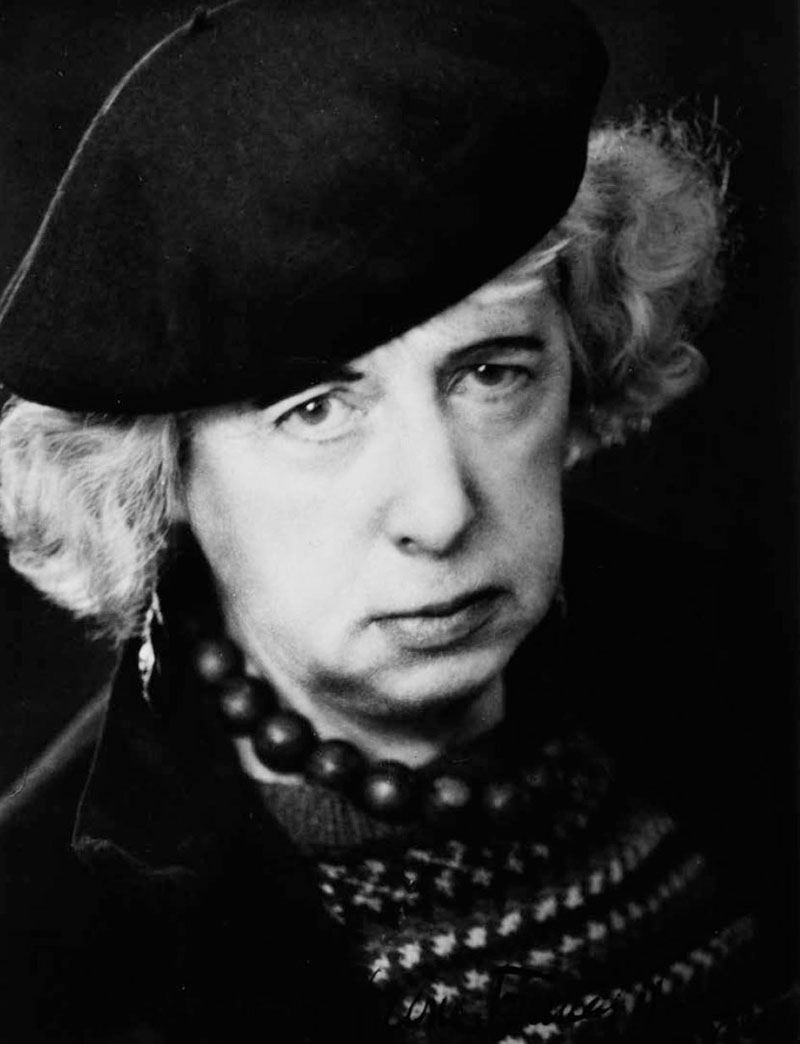
FIGURE 1.1
Frances Hodgkins, mid-1930s
Frances Mary Hodgkins (18691947) has always been difficult to locate within existing art-historical frameworks. Resistant to any particular style, forever on the move, her place within modernist art has never been settled. Born in New Zealand in the second half of the nineteenth century, she exemplified the progressive attitude and spirit of the colonial woman: a single, talented local artist who left for Europe in her early thirties. From that point onwards Hodgkins seldom had a fixed abode, and determinedly avoided any encumbrance, without property or any family of her own, her entire life. Instead she worked, as she wished, as an independent professional artist in a career that spanned six decades, drawing inspiration from the changing scene around her that her freedom and transience afforded.
It was not until Hodgkins was approaching the age of sixty that she began to establish a central place for herself within British modernism. In 1929 she was
Frances Hodgkins: European Journeys traces the impact of the ever-changing locales on Hodgkins development as a modernist painter. She travelled a long and singular artistic journey from late Victorian watercolourist to twentieth-century modernist, and if her style kept evolving it was due in large part to the constant exposure she had to new places, people and ideas. Hodgkins openness and curiosity, so apparent in her letters, meant she was perfectly poised to accrue within her work many of the artistic developments she was surrounded by. But the influences, for example, of Paris prior to World War I, London in the late 1920s and Spain in the 1930s were also filtered through her own strong sense of artistic self and by her outsider status: female, antipodean, alone and impecunious. Not that she was without supporters: Hodgkins had a talent for friendship and built up a loyal circle around her including Hannah Ritchie and Jane Saunders, Arthur Lett-Haines and Cedric Morris, John Piper and Myfanwy Evans, Geoffrey Gorer and Eardley Knollys who championed and collected her work. Their admiration and backing, along with that of her family, played a critical part in her capacity to keep practising her art.
Next page
